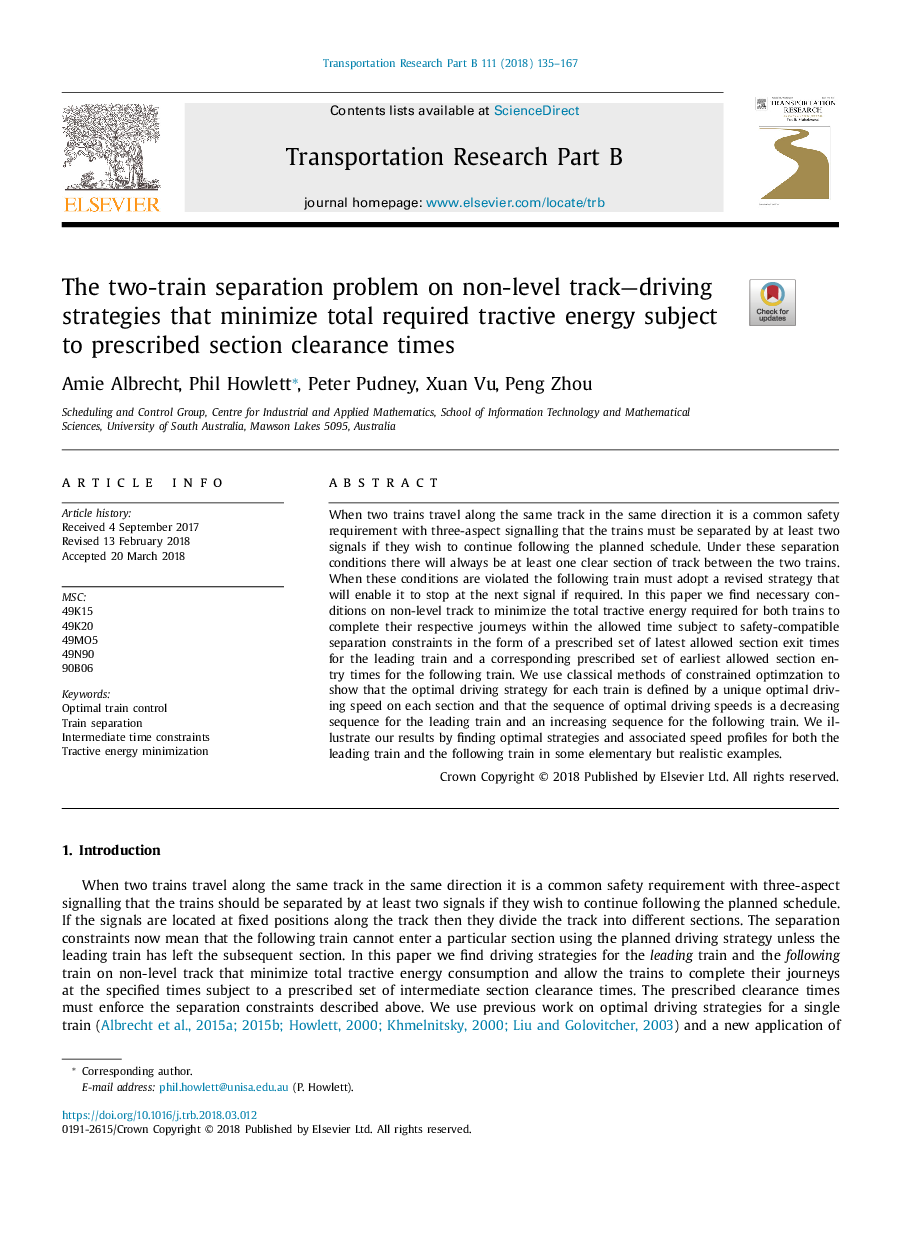| Article ID | Journal | Published Year | Pages | File Type |
|---|---|---|---|---|
| 7539059 | Transportation Research Part B: Methodological | 2018 | 33 Pages |
Abstract
When two trains travel along the same track in the same direction it is a common safety requirement with three-aspect signalling that the trains must be separated by at least two signals if they wish to continue following the planned schedule. Under these separation conditions there will always be at least one clear section of track between the two trains. When these conditions are violated the following train must adopt a revised strategy that will enable it to stop at the next signal if required. In this paper we find necessary conditions on non-level track to minimize the total tractive energy required for both trains to complete their respective journeys within the allowed time subject to safety-compatible separation constraints in the form of a prescribed set of latest allowed section exit times for the leading train and a corresponding prescribed set of earliest allowed section entry times for the following train. We use classical methods of constrained optimzation to show that the optimal driving strategy for each train is defined by a unique optimal driving speed on each section and that the sequence of optimal driving speeds is a decreasing sequence for the leading train and an increasing sequence for the following train. We illustrate our results by finding optimal strategies and associated speed profiles for both the leading train and the following train in some elementary but realistic examples.
Related Topics
Social Sciences and Humanities
Decision Sciences
Management Science and Operations Research
Authors
Amie Albrecht, Phil Howlett, Peter Pudney, Xuan Vu, Peng Zhou,
